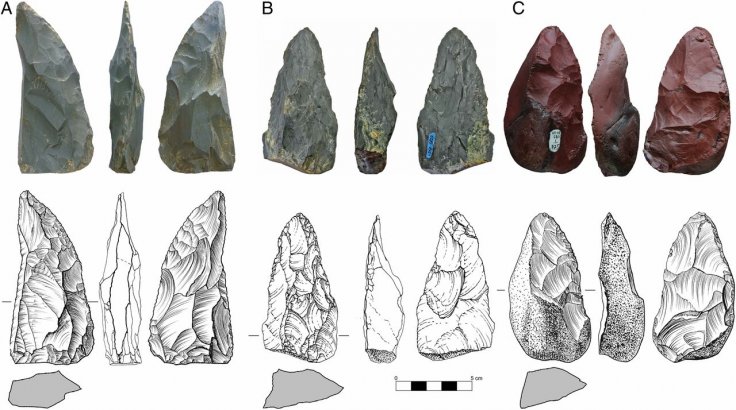The ancestors of modern humans, Neanderthals, who are the extinct species of archaic humans turned into one of the major research topics for the past few years and the recent artefacts found in Europe throw more light on their livelihood than previously known.
Scientists found ancient stone blades in a Siberian mountain cave which was once occupied by Neanderthals, who trekked nearly 2,000 miles to some 59,000 years ago across Europe to their destination.
Recently, when the scientists analyzed these tools, they found that the stone blades are not similar to the previously found tools in Siberia. Further analysis revealed that these were formed in the same way as those used by the Neanderthals in Eastern Europe. This unexpected similarity led the researchers to conclude that there were two separate long-distance migrations of Neanderthals into Siberia, almost 40,000 years apart.
New finding of Neanderthals

As per the researchers, the new discovery has shed light into the fact that these ancient humans, who lived from about 400,000 to 40,000 years ago, were sophisticated people who used to be skilled survivors and capable of undertaking such long journeys.
It should be noted that the Serbian cave, known as Chagyrskaya Cave, was first excavated in 2007. From that cave, archaeologists had found around 90,000 stone artefacts and the remains of plants and animals, as well as 74 Neanderthal fossils. The Russian Academy of Sciences has conducted analysis on more than 3,000 stone tools from the cave inside the deep forest in Siberia located at the foothills of the towering Altai Mountains.
The research on Siberian cave tools

The team of researchers used a method of time stamping known as optical dating that measures the last time when individual grains of quartz were brought under the sunlight, for determining when different artefacts and fossils were deposited from the cave.
This method has been proved useful to geologists, while the archaeologists used the method to find out when such an event in history occurred. The remains which were recovered from the cave also allowed the researchers to recreate the environmental conditions of that time.
The analysis revealed that the artefacts were used during a cold and dry climate. It should be noted that these tools would have used by the Neanderthals for hunting bison and horses in ancient time.
However, the study of these tools, which date back to 59,000 to 49,000 years ago, indicated the similarity with Micoquian tools, named after the La Micoque dig site in Dordogne in France, used by Neanderthals in Eastern Europe, over 1,000 miles to the west of the Siberian cave. As per the records, the Micoque was a period in history dating back to 130,000 to 60,000 years ago.
Serbian cave tools analysis
Kseniya Kolobova one of the experts involved in the recent study mentioned that the distinctive stone tools are "Dead ringers for those found thousands of kilometres away in eastern and central Europe," while the other team of researchers note that the Serbian tools found in the nearby Denison Cave are not Micoquian, instead, these suggest links to the so-called Levallois style, in which flakes were cut off tools off of a pre-prepared stone core.
In the study, the researchers stated that "The presence of Micoquian artefacts at Chagyrskaya Cave suggests at least two separate dispersals of Neanderthals into southern Siberia. Sites such as Denisova Cave were occupied by Neanderthals who entered the region before 100,000 years ago, while the Chagyrskaya Neanderthals arrived later."
However, the DNA analysis of these ancient humans also supports a link between the people living in Chagyrskaya Cave and their counterparts in eastern Europe. While explaining the team stated that when the Chagyrskaya toolmakers left the homeland in eastern Europe and migrated to Asia around 60,000 years ago, the Neanderthal population could have "headed north and east around the land-locked Caspian Sea."
In this recent study, the scientists found that this highlights the value of stone tools as culturally informative markers of ancient population migration. The scientists believe that if the Neanderthals were creative and intelligent skilled survivors, then "It makes their extinction across Eurasia even more mysterious. Did modern humans deal with the fatal blow? The enigma endures, for now."









